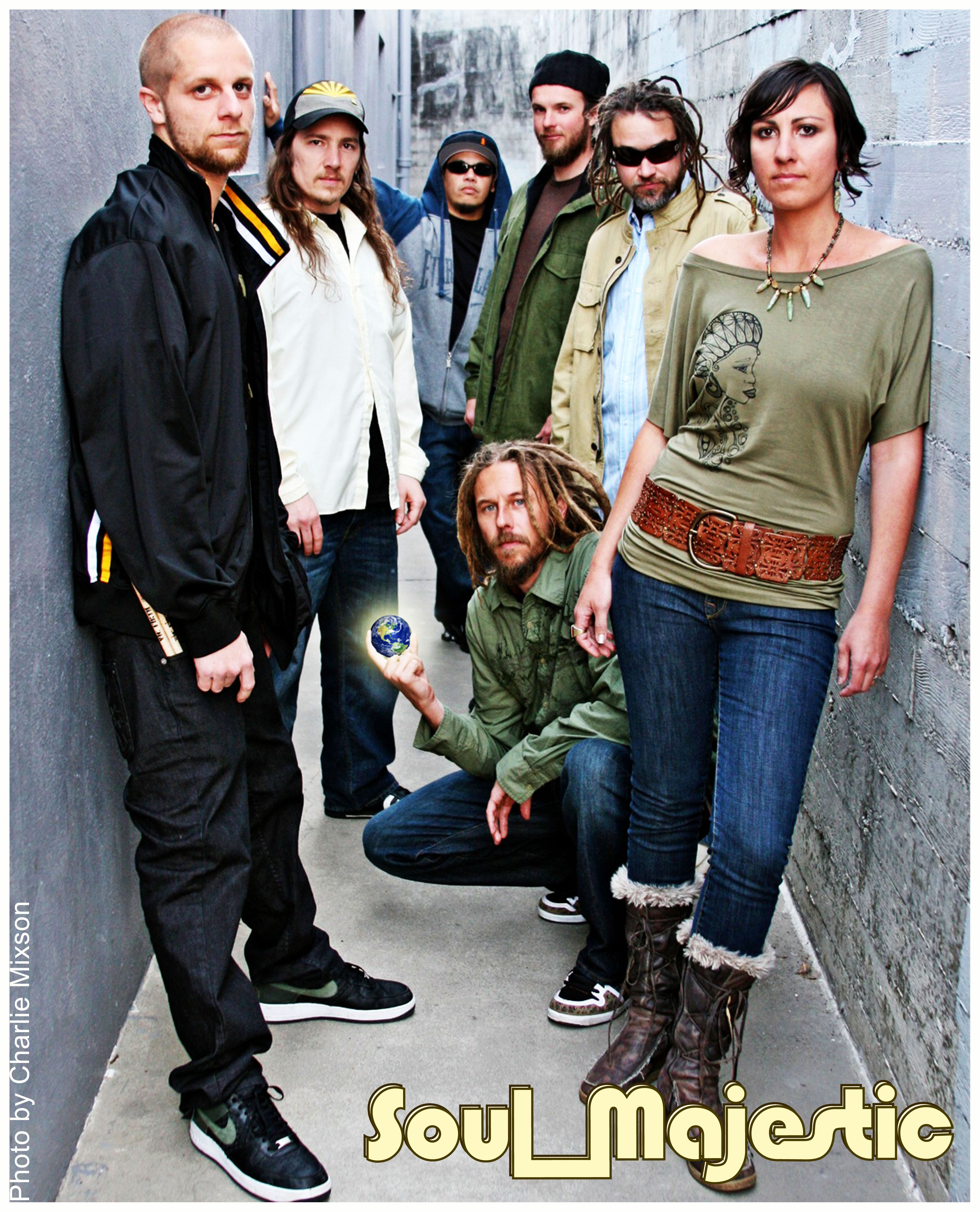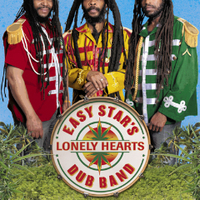{for May’s edition of What I’m Hearing, click here}
Summer months are traditionally good ones for mega pop hits to patrol the radio airwaves, washing out last year’s music and replacing it with something fresh to dance to in the warm weather. May saw some of that, with the new Eminem album, Passion Pit and the Kid Cudi mixtapes. But as June comes to an end and we look towards July, it appears that more of that trend will be upon us shortly. While June’s iPod update didn’t match May’s in quantity, it had everything it needed in terms of quality. 67 songs, over 10 artists, multiple genres. Enjoy!
Black Eyed Peas, The E.N.D.: After “Boom Boom Pow” came out, the Black Eyed Peas ran it into the ground on radio stations, talk shows, award shows and clubs. In fact, as new and futuristic as the song sounded originally, I wouldn’t hesitate to say that it has been thoroughly played out at this point, and that was before the album dropped. While the album title stands for “Energy Never Dies,” I’d actually argue that it stands for the end of the Black Eyed Peas as we know them. When they first hit the scene in 1998 with Behind the Front, the Peas were an unheard of group making fresh hip-hop. The songs walked that line with hints and traces of pop, but for the most part stayed true to form until they were joined by Fergie in 2003 for their Elephunk release. This addition drew them further away from hip-hop, and now, on The E.N.D., all traces of the group the Peas were are gone. Hip-Hop now forms one of the most minute sections of their music, with pop, dance and electronic taking center stage. But it’s almost too much. Will.i.Am’s production is amazing, but also fails to bring any sort of coherent thread to the album. He has no problem proving he can do these various genres and mimic them well, but there seems to be no ability to integrate them into an album that makes sense together. For the most part, I wasn’t a fan as the album just tries to do more than it can, but “Meet Me Halfway,” utilizing a fantastic dance beat and actually showcasing Fergie sounding like a vintage Madonna, is a bit of 80s meets 2009 fantastica. Don’t Sleep On: “Rockin’ The Beat,” “One Tribe,” and “Meet Me Halfway.”
Camp Lo, Stone and Rob Caught on Tape: Camp Lo has had a rough time of it. After their 1997 release, Uptown Saturday Night, the possibilities for Camp Lo appeared limitless. Their flow was good, the beats were steady, and the retro 70s feel of their songs put them in a niche market of hip-hop of their own. The popularity was growing on college campuses, and then, nothing. While they’ve had a few releases since, they were sporadic and failed to capture the attention of listeners. They’ve now returned on a new label with Stone and Rob Caught on Tape, and the sound they bring with them is far different from what listeners of Uptown would expect. The beats are more current and the duo takes on a bit of a harder edge in comparison to the milky flow they used to use. While the long hiatus could have killed the style, Camp Lo has come out on this one slightly changed, but not showing the kind of disconnect from previous music that Black Eyed Peas have. Don’t Sleep On: “Diamond Crookz,” “Gotcha,” and “Ticket 4 2.”
k-os, Yes!: When the album begins with “Zambony,” k-os’s intent is clear. A female voice asks, “Do you have any idea of the chaos you have caused around here? Nobody knows what you’re doing!” To which a man responds, “That’s exactly the way I like it!” And if his musical career is any example, the anonymity, chaos and ability to make whatever music he wants is exactly what he wants. There are a lot of great unknown acts out there, but I don’t think there’s a single one with the kind of track record combined with anonymity that k-os has. For those that haven’t heard, k-os is from Trinidad by way of Canada, turned to vegetarianism by age 8 and was raised by parents who are Jehovah’s Witnesses. More importantly though, he’s released 4 studio albums, all fantastic, spanning numerous genres and styles, and yet he’s still not well known. In fact, he’s not even talked about. Funk, reggae, hip-hop, rock, dance, and R&B all play roles in his music, and Yes! finds him utilizing all of these styles to full and complete advantage. Through Exit, Joyful Rebellion, Atlantis – Hymns for Disco and now Yes! k-os never sells his style short, but doesn’t hesitate to use the things he enjoys. There’s auto-tune here, but not in the over-saturated style of so many artists, merely as a nod and inclusion of a new sound. What’s more is that the album is bundled with remixes of every song by various artists, offering two very distinct musical takes on every track. If you haven’t heard k-os yet, now’s the time. Don’t Sleep On: “Zambony,” “Burning Bridges,” and “I Wish I Knew Natalie Portman.”
Mos Def, The Ecstatic: It’s easy to forget, between the television appearances, the movie roles and his hosting duties that Mos Def has more roots in the music industry than anywhere else. However, he has yet to equal the early success he had on this front since he turned more attention to his screen endeavors. The Ecstatic finds Mos back in hip-hop after a nearly 3 year hiatus following his final record under contract for Geffen Records. And the break has seemed to help. This album seems a bit more grounded in the hip-hop that brought Mos Def to the masses, and less hooked on some of the musical diversions he’s entertained himself with lately. However, the distraction of film and television is evident here. The album seeks to do so much musically that it feels as if Mos is trying to make a CD that will fit in every genre of film or theatre he’s participated in. The result is a mish-mash of sounds that detract from his greatest strength: rapper and crafter of words. On the tracks here where Mos stays focused on the genre, the results are excellent, but in too many cases, he’s trying to bite off more than he can chew, making the album sound almost like a disjointed soundtrack to a movie rather than a full length album from a hip-hop artist three years in the making. While it’s a solid outing, and certainly closer to the mark than True Magic and The New Danger, it still fails to hit on all cylinders like Black on Both Sides. While I think it’s great that Mos Def wants to explore acting and other outlets in addition to hip-hop, his music is at its strongest when he leaves the theatrics out and concentrates on the microphone. Don’t Sleep On: “Quiet Dog,” “History (feat. Talib Kweli)” and “Priority.”
Throw Me the Statue, Creaturesque: Well, I can’t talk about this one yet because it’s not out. But I will say that I’ve heard it and I’m excited to tell y’all about it as soon as I’m allowed to review it.
White Rabbits, It’s Frightening: On the second album from this New York based Indie Rock band by way of Missouri, the sounds are crisp in comparison to the rest of the Indie scene, eschewing fuzz and static for cleaner lines and thumping drums. The guitar sounds here are clear, whether being used for gentle picking in “The Salesman (Tramp Life)” or to carry melody on the Badly Drawn Boy reminiscent “They Done Wrong/We Done Wrong.” The band sounds tight here, with consistent vocals, solid bass backing and drums that drive the songs from start to finish, all nicely sprinkled with piano. For those that like Indie Rock but are a bit tired of the lo-fi, static saturated recordings that have become the norm in the genre, the White Rabbits should provide a nice change of pace. Don’t Sleep On: “Percussion Gun,” “Rudie Fails,” and “They Done Wrong/We Done Wrong.”
For a notable single this month, check out 9:15’s “Just Above My Head.” Fantastic.





